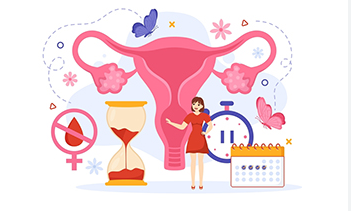Whether OAS Clawback Is Based on Family or Individual Income

Understanding the OAS Clawback Mechanism
Let’s get a handle on how the OAS clawback actually works. It’s a system designed to adjust your Old Age Security pension based on your income.
What is the Old Age Security Pension?
The Old Age Security (OAS) pension is a monthly payment available to most Canadians 65 years of age or older. It’s funded from the general tax revenues of the Government of Canada. You don’t need to have worked in Canada or paid into the Canada Pension Plan (CPP) to get it, but you do need to meet certain residency requirements. It’s a foundational part of retirement income for many.
How the OAS Clawback Works
So, how does this ‘clawback’ thing function? Basically, if your individual net income goes above a certain amount in a given year, you have to pay back some or all of your OAS pension. It’s not a penalty, but rather a way to make sure that those with higher incomes contribute a bit more back to the system. The amount you repay is calculated based on your income from the previous year. The higher your income, the more OAS you might have to return.
The Purpose of the OAS Clawback
Why does this system exist? The main idea behind the OAS clawback is to make the pension program more sustainable and fair. By having higher-income seniors contribute more, the government can continue to provide the OAS pension to a wide range of Canadians, including those who rely on it more heavily. It’s a way to target benefits towards those who need them most, while still acknowledging that higher earners can afford to contribute more.
It’s important to remember that the clawback is based on your income from the year before the payment is received. So, if your income changes, it will affect your OAS payments in the following year.
Determining Eligibility for OAS Clawback
So, how do they figure out if you have to pay back some of your Old Age Security (OAS) pension? It’s not just a simple yes or no. They look at your income, but it’s a bit more complicated than just your personal paycheque. Let’s break it down.
Individual Income Thresholds for Clawback
First off, the government looks at your net income from the previous year. This is the income after deductions, but before taxes. For 2023, if your net income was over $79,050, you started to owe some money back. The more you earn above this amount, the more OAS you have to repay. It’s a gradual process, not an all-or-nothing deal. For every dollar you earn over that initial threshold, you might have to pay back about 15 cents of your OAS pension.
Impact of Spousal Income on OAS
Now, this is where it gets interesting. While your own income is the primary driver for your OAS clawback, your spouse’s income can indirectly affect things, especially if you’re filing taxes jointly or if your combined financial picture is being considered for other benefits. However, for the direct OAS clawback calculation on your pension, it’s primarily your individual net income that matters. Your spouse’s income doesn’t directly reduce your OAS payment unless it pushes your combined household income to a point where other family-related benefits are affected, or if you’re looking at things like income-splitting strategies.
How Family Income is Considered
While the OAS clawback itself is calculated based on individual net income, the concept of family income does come into play in the broader context of retirement planning and government benefits. For instance, if you’re applying for certain provincial supplements or other federal programs tied to retirement income, they might look at your household income. But for the OAS clawback specifically, the rules are set up to target individuals whose personal earnings have reached a certain level. It’s designed to ensure that those with higher personal incomes contribute a bit more back to the system.
It’s easy to get confused because sometimes benefits are based on household income, and sometimes they’re based on individual income. For OAS, the clawback is tied to your personal net income from the year before. So, if you had a really good year financially, expect to see a reduction in your OAS payment the following year.
OAS Clawback in 2023: Key Changes and Considerations
Alright, let’s talk about the oas clawback 2023 and what you need to know moving forward, including hints about the oas clawback 2024 and oas clawback 2025. It’s not always straightforward, and things do change year to year. Understanding these adjustments can help you plan your finances better.
Updated Income Limits for OAS Clawback
For 2023, the income threshold for the OAS clawback started at $79,050. If your net income was above this, you might have to repay some of your OAS pension. This amount gets adjusted annually for inflation. So, for 2024 and likely 2025, expect these numbers to be a bit higher. It’s always a good idea to check the official government sources for the exact figures each year.
Calculating Your OAS Clawback for 2023
Figuring out your OAS clawback involves looking at your net income from the previous year. If your net income in 2023 exceeded the threshold, you’ll start repaying your OAS. The repayment is 15% of the amount of income you earned above the threshold, but it won’t be more than the total OAS you received. For example, if you earned $85,000 in 2023, you’d owe 15% of the $5,950 that was over the initial $79,050 threshold. That’s $892.50. This amount would then be deducted from your monthly OAS payments.
Strategies to Mitigate OAS Clawback
There are a few ways people try to reduce or avoid the OAS clawback. One common method is income splitting with a spouse, especially if one spouse has a much lower income. Another approach involves using registered retirement savings plans (RRSPs) or tax-free savings accounts (TFSAs) strategically. For instance, withdrawing from RRSPs in lower-income years or contributing to TFSAs can help manage your net income. Some also consider deferring their OAS pension, as this increases the amount you receive monthly, potentially absorbing some of the clawback.
- Income Splitting: Share income with your spouse to lower individual taxable incomes.
- RRSP Withdrawals: Plan withdrawals to occur in years with lower overall income.
- TFSA Contributions: Use TFSAs for investment growth without affecting your net income for clawback purposes.
- Pension Deferral: Delaying OAS can increase your monthly payments, potentially offsetting some clawback.
It’s important to remember that the clawback is based on your net income from the previous year. This means that income earned in 2023 affects your OAS payments in 2024. Planning ahead is key, especially as you look towards the oas clawback 2024 and beyond.
The Role of Individual Income in OAS Repayment
When we talk about the Old Age Security (OAS) pension, it’s easy to get caught up in the idea of a shared household income. But the reality is, your personal earnings play a significant role in how much OAS you might have to repay. It’s not just about what your family makes together; your own financial picture is front and center for this particular calculation.
How Your Personal Earnings Affect OAS
Your individual net income is the primary driver for the OAS clawback. If your income exceeds a certain threshold, you’ll start repaying a portion of your OAS pension. This means that even if your spouse or partner has a lower income, your higher personal earnings can trigger or increase the clawback amount for your own OAS payment. It’s a direct link between what you earn and what you receive from the government.
Distinguishing Individual vs. Household Income
It’s important to draw a clear line between your personal income and your household’s combined income. While some government benefits consider the total household earnings, the OAS clawback is largely based on your individual net income. Think of it this way: the government looks at your personal tax return first to see if your income level requires you to give back some of your OAS. Only in specific situations, like when determining eligibility for certain credits or benefits that supplement OAS, does the combined income become the main focus. For the clawback itself, though, it’s mostly about you.
Impact of Investment Income on OAS
Investment income, such as dividends, interest, and capital gains, counts towards your individual net income for OAS clawback purposes. So, if you have a robust investment portfolio, the income generated from those investments will be added to your other earnings. This can push your total individual income higher, potentially leading to a larger clawback amount. It’s not just your employment income that matters; passive income streams are definitely on the government’s radar when calculating your OAS repayment.
The OAS clawback is a tax recovery system. If your income is too high, you’re expected to return some of the OAS you received. It’s designed to ensure that those with higher incomes contribute more back to the system.
Here’s a simplified look at how it works:
- Your Net Income: This is the starting point. It includes most types of income you receive.
- The Threshold: There’s a specific income level set each year. If your net income is above this, the clawback begins.
- Repayment Amount: You’ll have to repay 15% of the amount your income exceeds the threshold, up to the full amount of OAS you received.
It’s a good idea to keep track of your income throughout the year, especially if you have various sources like employment, pensions, and investments, to get a sense of where you stand regarding the OAS clawback.
Family Income Dynamics and OAS Clawback
When we talk about the Old Age Security (OAS) clawback, it’s easy to get caught up in just your own income. But for many seniors, especially those who are married or in common-law relationships, what your partner earns can also play a role. It’s not always a simple one-to-one calculation based on your personal earnings.
When Does Combined Income Matter?
The OAS clawback is primarily based on individual net income. However, there are situations where the combined income of a couple, or family unit, indirectly influences how much OAS you might have to repay. This usually comes into play when you’re looking at tax planning or trying to understand the overall financial picture for a household. The system is designed to target individuals whose income exceeds a certain threshold, but a spouse’s income can affect your ability to split income or utilize certain tax credits, which in turn can impact your net income calculation.
Scenario: Both Spouses Receiving OAS
If both you and your spouse are receiving OAS pensions, each of you will have your own OAS clawback calculated based on your individual net income. So, if your income is below the threshold, you won’t have a clawback, regardless of your spouse’s income. The same applies to your spouse. However, if one spouse has a high income and the other has a low income, the higher-income spouse might have their OAS reduced or eliminated, while the lower-income spouse might receive their full OAS pension. It’s important to remember that these are separate calculations for each individual.
Impact of Dependents on OAS Clawback
Generally, the number of dependents in a household does not directly impact the OAS clawback calculation for the seniors themselves. The clawback is tied to the net income of the OAS recipient. While dependents might affect other government benefits or tax credits, they don’t alter the specific rules for OAS repayment based on an individual’s income. The focus remains squarely on the income of the person receiving the OAS pension.
It’s a common point of confusion, but the OAS clawback isn’t a family income tax. It’s a personal repayment obligation based on your own earnings. While family finances are important for overall planning, the OAS clawback mechanism itself looks at each recipient individually.
Navigating OAS Clawback Rules
It’s easy to get tangled up in the specifics of the Old Age Security (OAS) clawback. Many people have questions, and sometimes the information out there can be a bit confusing. Let’s clear some things up.
Common Misconceptions About OAS Clawback
Lots of folks think the clawback is solely based on their personal income, but that’s not always the case. Sometimes, your spouse’s income can play a role, especially if you’re in a situation where combined income is considered. Another common idea is that once you start paying it back, you’ll always have to. That’s not true either; your repayment amount can change year to year based on your income.
- Misconception: The clawback is only about your individual earnings.
- Reality: While individual income is primary, combined income can be a factor in certain scenarios.
- Misconception: If you have to repay OAS, you’ll always have to.
- Reality: Your repayment amount fluctuates with your annual income.
- Misconception: Investment income is treated differently than employment income for clawback purposes.
- Reality: All taxable income generally counts towards the clawback calculation.
It’s important to remember that the rules are designed to target those with higher incomes, ensuring the program supports those who need it most. Don’t assume you know how it works without checking the latest details.
Resources for OAS Clawback Information
Where can you find reliable information? The best place to start is the official source. The Government of Canada website has detailed explanations and tools.
- Government of Canada OAS Page: This is the definitive source for all things OAS, including clawback details and current income thresholds.
- Canada Revenue Agency (CRA) Website: The CRA handles the actual collection of the clawback, so their site has practical information on how it’s calculated and paid.
- My Service Canada Account: If you have an account, you can often find personalized information about your OAS benefits and any potential clawback.
Seeking Professional Advice on OAS
Sometimes, even with good resources, your personal financial situation can be complex. If you have multiple income sources, investments, or are unsure how your specific circumstances affect your OAS, talking to a professional is a good idea.
- Financial Advisor: They can help you understand how your overall financial picture impacts your OAS and suggest strategies.
- Tax Professional: A tax accountant can help you accurately calculate your income and understand the tax implications of the OAS clawback.
Don’t hesitate to seek expert help if you’re feeling uncertain about your OAS clawback. It’s better to be sure than to make assumptions that could cost you money.
So, What’s the Verdict?
After looking into it, it seems the whole OAS clawback thing isn’t quite as simple as just looking at one person’s paycheck. While it’s true that your own income plays a big part, the government also takes a peek at your spouse’s earnings if you’re married. This means that even if you’re bringing home a modest amount, a higher earner in the household could push you into that clawback zone. It’s a bit of a mixed bag, really. So, if you’re wondering if you’ll have to give some of that OAS money back, it’s worth checking both your income and your partner’s, just to be sure you know where you stand.
Frequently Asked Questions
What exactly is the OAS clawback?
The OAS clawback means that if you earn a lot of money, you might have to pay back some of the Old Age Security (OAS) pension you received. It’s like a tax on your pension if your income is too high.
Does my spouse’s income affect my OAS clawback?
No, the OAS clawback is mainly based on your own personal income. While your spouse’s income might be looked at in certain situations, it’s your individual earnings that usually trigger the clawback.
Are there income limits for getting the full OAS pension?
Yes, there are income limits. If your income goes over a certain amount, you’ll start to owe back some of your OAS money. These limits can change each year.
Why does the government have this OAS clawback rule?
The government uses the clawback to make sure that people who need the OAS pension the most get it, and those who have higher incomes contribute a bit more back. It helps fund the program.
How can I avoid or reduce the OAS clawback?
You can try to lower your taxable income. This might include saving more in retirement accounts or planning how you take money out of investments. It’s a good idea to talk to a financial expert.
Where can I find more information about OAS clawback?
It’s best to check the official government website for Canada or speak with a financial advisor. They can give you the most up-to-date information and help you figure out your specific situation.







